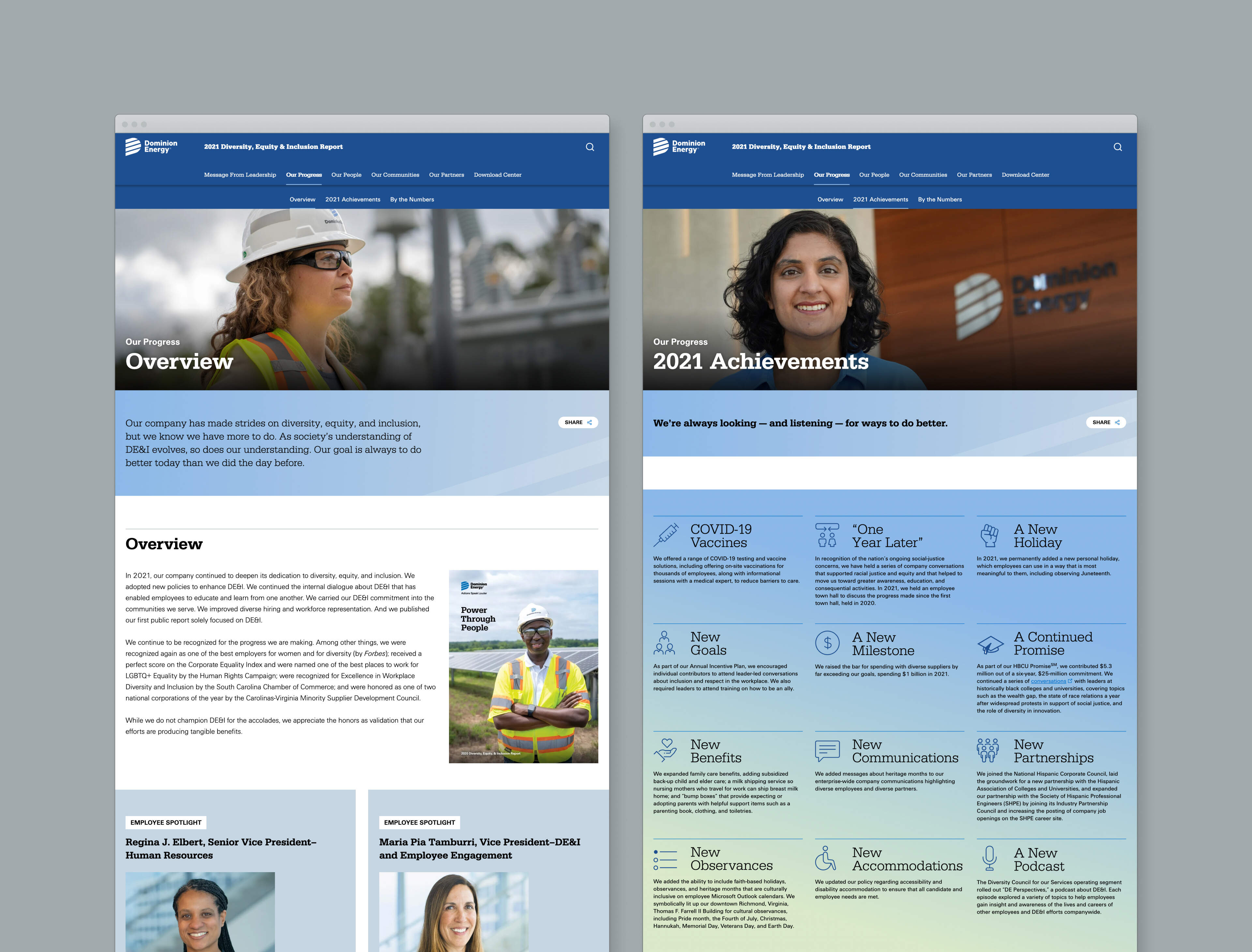5 Tips for Creating Your First Diversity, Equity & Inclusion Report
Companies publishing a Diversity, Equity & Inclusion (DEI) report are multiplying. Here are the basics and how to get started.
What is a DEI Report?
DEI reports don’t have a standard format or name. Any variety of names and order of words can be found, but the intent is common: to share the statistics of men and women (and perhaps others) at the company relative to all employees, with distinction for leadership and technical roles. For U.S. companies ethnic and racial breakdowns may be included. But diversity is much more than gender and race, these reports are evolving. Leading reporters are being asked to look at the effects of their products and services on marginalized communities as yet another lens on DEI.
Why issue a DEI Report?
Most people want to work for a company that is fair and where they can find others like themselves. Potential employees and current employees are starting to look for the data provided in these reports, the programs the company is instituting, and the stories that add context. So, companies of all sizes and industries are feeling the pressure to produce a report.
For data reporting and goals to be effective, they must be detailed to create transparency; shared with insiders and the public to induce accountability; and accompanied by action plans to promote change.
HBS, How Companies Should Set — and Report — DEI Goals
Regardless of whether your company is where it wants to be or not, creating an honest depiction of your workforce through a broad lens, with an embrace of efforts across the organization, can benefit your organization, your community and society as a whole. Transparency is an example of your candor and leadership, and can help to set the tone.
But, you will need to understand why YOUR company is doing it. There will be both praise and criticism, so be sure leadership is aligned and the company is ready to hold itself accountable, no matter the results. Progress is slow and this is not a one-and-done exercise. For companies issuing an ESG or Responsibility Report, a section on DEI might be enough, at least at first. But if you are ready for a stand-alone report we can help.
So, what’s the first step?
1. Gather DEI Data
You will be expected to share data. If you file your EE0-1 that’s a fine place to start. Really it’s the bare minimum. But those stats can form the starting place, and you can include the highlights and link to your EE0-1 Report. (Don’t repeat yourself and don’t make readers work too hard for it. Global companies are focused on gender, and you should look to include a non-binary/non-conforming category. Even if you have zero employees who identify this way it shows you acknowledge other options exist. In the U.S., race and ethnicity are often a focus. Inclusion is broad, covering all types of differences. If you can provide the intersectional context that’s even better.
2. Set DEI Goals
Once you’ve decided to share the metrics, you want to hold yourself accountable by setting goals. Even if you are at the start of your journey, you want to be able to measure your progress. Make sure the goals are authentic to your company, and set realistic timeframes. Goals can be about process or outcomes, and they can be nuanced. This is not fast work. It’s good to benchmark yourselves against other similar companies and decide how ambitious you want to be.
3. Gain consensus
The work of DEI is collaborative, the report will be too. You want broad support and input: include HR, DEI, Leadership and employees. Remember, the idea is to get better, not to be perfect.
4. Tell DEI stories
DEI is complex, and data cannot tell the entire story. Be sure to include examples, profiles, case studies, your Employee Resource Groups or other examples that can bring the rich complexity of your workforce to life. People plus their personal stories adds dimension to the company message.
5. Publish & share
Share the report internally and externally, especially in Careers contexts. Be sure job seekers can find this information on your website, and employees can find it on your intranet too. Share widely and welcome feedback. It’s ok to be be honest, this is a journey and all companies are on the path. A great lesson was summarized in the HBS article about setting and reporting DEI goals: “Reporting and sharing detailed data, setting detailed goals, and spelling out action plans can help firms to promote, and sustain, workforce diversity.”
You can choose the best format for your company. Reports can be interactive PDFs, websites or even a printed document. A few examples:
Examples
Below, Dominion Energy takes a web-first approach.

Other examples include Colgate-Palmolive, Hub Spot, Citi, Edison International, BlackRock, and many more.
How Ideas On Purpose Can Help
For over 20 years IOP has been helping companies of all sizes with their purpose-driven communications, including corporate reporting and DEI storytelling. Our strategy, content, digital and creative teams are ready to help you define and tell your DEI, ESG, and Sustainability story and meet your reporting goals. Feel free to email us, we’re happy to discuss the possibilities.
Photo: Agence Olloweb on Unsplash